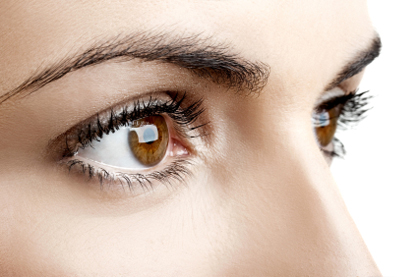Eyebrow transplants new beauty option
Want to lift brows in more than one way? Eyebrow transplants offer a new treatment for people who have genetically less eyebrow hair or have overplucked their brows.
Some people lose their eyebrow hair due to a genetic predisposition, while others may have medical issues, such as thyroid problems or autoimmune disorders, which cause hair loss. In addition, trauma or injury to the area, such as burns, may damage the hair follicles permanently. Eyebrow transplants can be a solution to any of these issues, as the procedure restores a person’s eyebrows in a natural, safe method, whether the hair loss is full or partial.
“Eyebrows are a very crucial feature of the face,” Parsa Mohebi, M.D., a hair transplant surgeon who operates US Hair Restoration, a collection of hair loss treatment clinics in California, said of why so many choose to get the procedure. “It’s the center of the face and it’s the first place – eyes and eyebrows – that grabs people’s attention. So loss of eyebrows is very obvious.”
Mohebi recalls a woman who came to him with very sparse eyebrow hair. She had tried tattooing, but the pigment of the tattoo changed, leaving her with orange-and-pink-colored brows. She then attempted to cover the area with makeup, but was still unhappy. After her transplant, she saw incredible results. In just one operation, her eyebrows were restored to their natural density.
“After five months, I saw her and she said how important the restoration of the eyebrows had been for her and her life and how many more social opportunities she had now,” Mohebi, a diplomat of the American Board of Hair Restoration Surgery, reported. “She doesn’t have to cover her face or try to cover the tattoo area anymore.”
For the transplant, a strip of scalp hair is harvested from the back or side of the head in a procedure known as follicular unit transplant. The strip of skin is dissected under a microscope into its follicular units – the natural groupings of the hair. For eyebrows, surgeons only use groupings of one or two hairs. Tiny incisions in the eyebrow area are made and the follicular units inserted in the natural direction and distribution of the hair. The results are permanent and can be very striking, with one hair transplant often providing enough coverage, particularly if the hair used is thick.
The procedure, though, is intensive, lasting four to eight hours. If the patient has no original eyebrow hair, the transplant may require 300 to 400 grafts; partial eyebrow loss needs 100 to 200. The patient is awake during the procedure but under local anesthesia. The end result is so natural, not even a hair surgeon could detect a difference.
While the results are dramatic, they do not occur overnight. The transplanted hair will initially fall out in one or two weeks after surgery, while the follicles will remain and start to gradually grow hair over the next few months.
“The results are very gradual,” Mohebi noted. “It’s not a surprising event. But when we see patients five or six months after surgery, they have full results and they look at their before surgery photos, and it’s a huge change.”
The hair, however, will grow like scalp hair and will need trimming at least once a week, especially for women who want a feminine, delicate appearance.
While there are other ways to cover eyebrow loss, including tattooing and makeup, no other technique offers the natural coverage created by transplants.
“A lot of people use makeup to cover the hair loss area. Just being able to do things that you can’t do without make-up is not possible for them,” Mohebi said. “So having the hair transplant done gives patients the freedom to do everything they want and they can keep the natural beauty of their face.”
Mohebi also sees women who have eyebrows, but want to change their shape. These women choose to remove their existing eyebrows with a laser treatment and then do an eyebrow transplant to create their ideal brows.
The most common reason for eyebrow transplants, however, is hair loss from overplucking. Women who constantly pluck their eyebrows may be at risk for traction alopecia, a condition that stops eyebrow hair from growing.
“When you overpluck over time, you actually make the hair follicles more superficial every time that you do that,” Mohebi said. “After some time, the hair is not as in the skin. It’s not considered viable and won’t grow anymore. That is the most common cause of eyebrow hair loss. The hair follicle has been completely removed from the skin area.”
Hair transplants were invented by Japanese doctors during World War II to treat burn victims. The doctors discovered that when they grafted skin from other areas to treat wounds, the hair would grow in the new location. American doctors adapted the process for cosmetic reasons and over time, the procedure as it is today was developed.
Eyebrow transplants are not cheap and can cost a few thousand dollars, depending on the number of grafts needed. For more information, visit ushairrestoration.com.
Would you consider getting an eyebrow transplant?
Tagged in: lux exclusives, hair, brow, brow hair, eyebrows, eyebrow transplant, grafts, us hair restoration, surgery,

LadyLUX via istock



